The most unusual and strange fish on our planet (16 photos)
The world of oceans and rivers hides thousands of amazing creatures that many have never even heard of. Among the nearly 30,000 species of fish, there are some that amaze with their appearance, habits, or unusual abilities. Some seem funny, others are frightening, and still others seem to have come from the pages of a science fiction novel. Let's get acquainted with the strangest and most unusual fish on our planet. 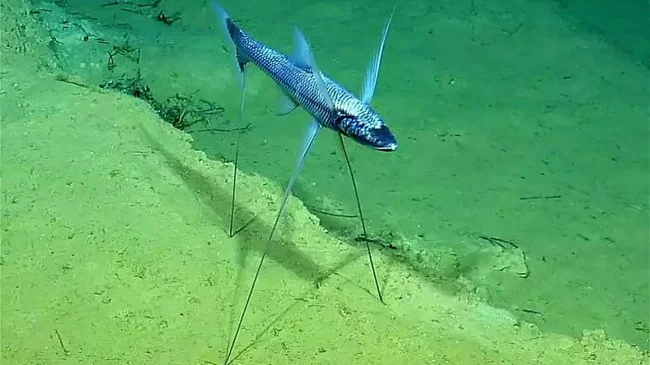
Asian sheepshead wrasse - a fish with a "potato" head 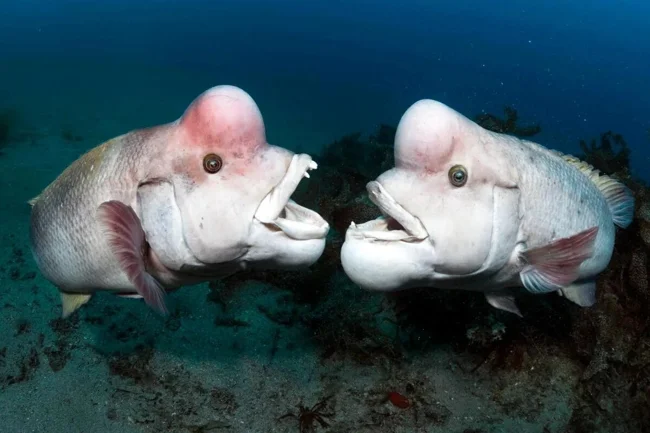
Among the colorful inhabitants of the sea reefs of Japan, China and Korea, the Asian sheepshead wrasse occupies a special place. Seeing it for the first time is already a surprise: a massive bony growth grows on the forehead of this fish, which is why it is called "fish with a potato head". Adult males are especially spectacular: their forehead seems to be disproportionately large, and the lower lip protrudes forward, resembling a grimace.
Young wrasses look different: slender, with neat outlines, they literally change their appearance as they grow older. This process is closely related to sexual maturity and behavior. The fact is that wrasses are so-called hermaphrodites - they begin life as females, and later become males. This phenomenon is called sequential hermaphroditism and allows the species to survive: if there are few males in a group, some of the females are transformed. 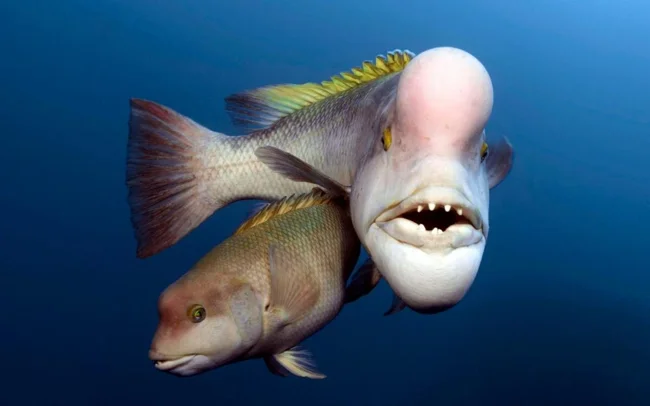
The behavior of sheepshead wrasse is also impressive. Males are aggressive and jealously guard their territory, arranging demonstrative "fights" in which they demonstrate their huge forehead and strength. Despite their formidable appearance, they feed mainly on mollusks and crustaceans, gnawing their strong shells with powerful jaws.
In Japan, wrasse are revered as a symbol of strength and longevity. Local fishermen treat them with respect, and aquarists all over the world value them for their unusual appearance and interesting behavior.
Flying fish are the real "pilots" of the oceans 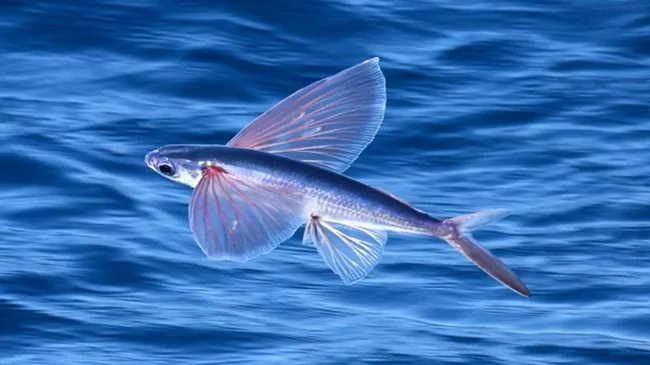
In the vast expanses of the Atlantic and Pacific Oceans, you can see a breathtaking spectacle: a whole school of fish bursts out of the water, and before the eyes of amazed observers, they soar into the air like birds. These are flying fish, unique creatures capable of gliding over the waves for tens, and sometimes hundreds of meters.
The secret of flight is in the special structure of the body. Their pectoral fins are huge and look like wings, and the tail fin is asymmetrical: the lower lobe is longer and serves as a "motor". The fish accelerates in the water, quickly working its tail - up to 70 flaps per second - and jumps out of the water with force. Then the fins open, and the fish glides through the air, using the ascending currents.
The record flight of flying fish is almost 400 meters, which is comparable to the length of four football fields. The height of the rise can reach 5-6 meters - they easily fly over small boats. 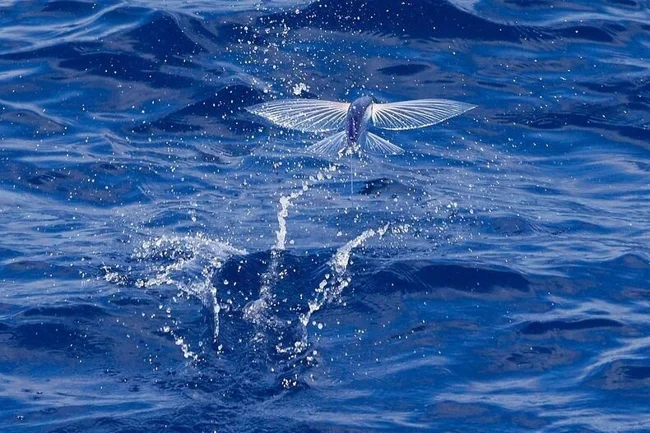
This ability is not a game, but a vital defense against predators. When a tuna or dolphin is chasing a fish, it has a chance to jump out of the water and go to the side. Sometimes flying fish fall right onto the decks of ships, surprising sailors.
It is interesting that they can fly in groups: hundreds of individuals jump out of the water at the same time, their silver scales sparkling in the sun. This spectacle is so impressive that in some countries flying fish have become a symbol of good luck
Ambona scorpionfish - a poisonous "partisan" of the seas 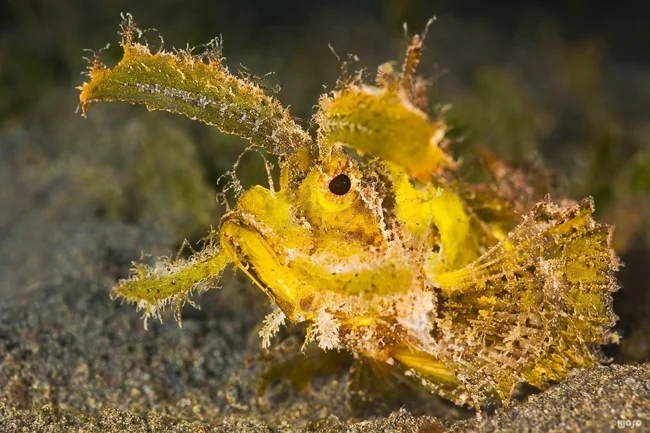
One of the strangest and most dangerous fish - Ambon scorpionfish - lives in the warm waters of the Red Sea, Indonesia and off the coast of Australia. Its appearance is shocking: its body is covered with leathery growths resembling algae, “eyebrows” stick out above its eyes, and its coloring blends perfectly with its surroundings. It is almost impossible to notice this fish on the bottom among rocks or corals.
The scorpionfish’s main weapon is its poisonous spines. They are located on the dorsal fin, and their sting can be deadly to humans. The poison causes severe pain, paralysis, and even respiratory arrest. That is why scorpionfish are often called “sea killers.”
These fish lead a sedentary lifestyle. They lie in wait for prey: small fish, crabs, and shrimp. As soon as the victim swims closer, the scorpionfish opens its mouth with lightning speed and sucks it in whole. 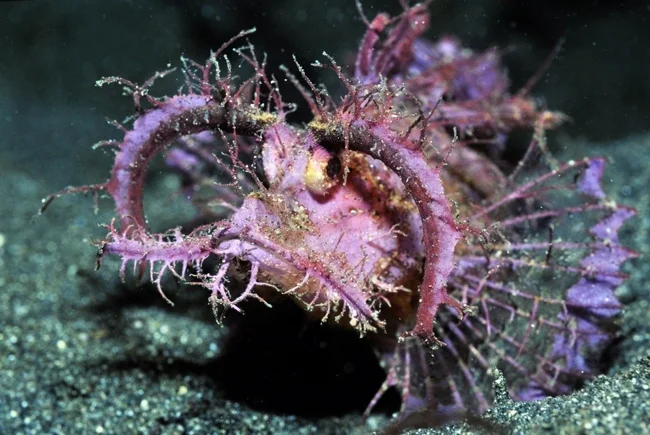
Surprisingly, scorpionfish can molt — get rid of old skin, like snakes. This helps to renew their camouflage and get rid of parasites.
Despite the danger, Ambon scorpionfish are popular among divers who want to see them with their own eyes. However, you need to be careful when meeting them: one careless move is enough to get a dangerous sting.
Mudskipper - a fish that can walk 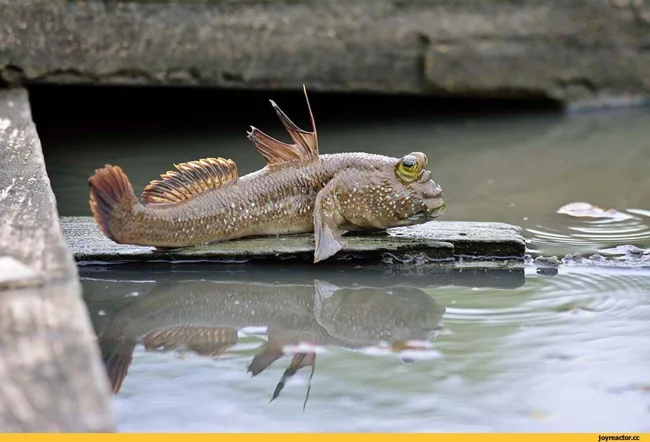
The mudskipper is one of the most amazing examples of fish adapting to life outside of water. These unusual creatures live in mangrove swamps and estuaries in tropical regions of Asia, Africa and Australia. Where other fish die at low tide, mudskippers feel like real masters.
These fish are able to move on land using their pectoral fins like paws. Their tail helps them push off, and mudskippers can jump up to 30 cm. They behave more like amphibians: they dig holes in the mud, go ashore to hunt, and can spend several hours out of the water.
To breathe, mudskippers use three mechanisms: they retain water in their gill chambers, absorb oxygen through their skin, and even through the mucous membrane of their mouth. The main condition is humidity. Therefore, they often cover themselves with mud or dive into the water to avoid drying out.
Their diet is varied: insects, crustaceans, worms, mollusks, and even algae. Males are territorial and aggressive: they fiercely defend their burrows and stage real "fish fights", rising on their fins and pushing their rivals with their chests.
The mudskipper is a striking example of how fish could have come onto land and mastered a new environment millions of years ago. Scientists consider it a living "link" between the world of fish and amphibians.
Stargazers - "Ambush Fish" 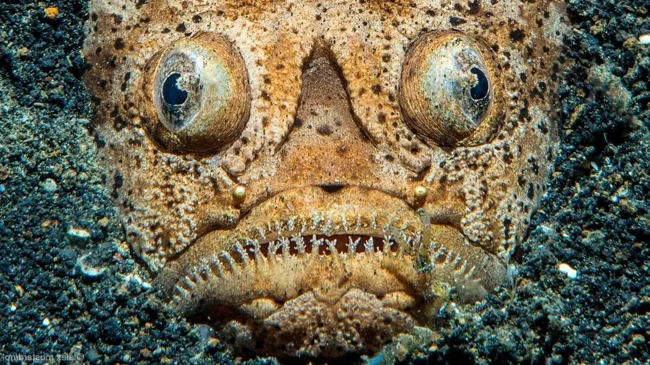
Stargazers are marine predators with a very unusual appearance. Their eyes and mouth are located on the top of their heads, which makes it seem as if they are constantly looking up. These fish burrow into the sand, leaving only their eyes and mouth on the surface, and patiently wait for prey.
As soon as the prey swims closer, the stargazer instantly opens its mouth and sucks it in, creating a powerful suction. This technique makes them one of the most successful predators on the seabed.
Some species of stargazers have an amazing "weapon" - a tongue appendage resembling a worm. The fish moves it, luring victims. In addition, some stargazers have poisonous spines, which make them dangerous not only for small fish, but also for humans. 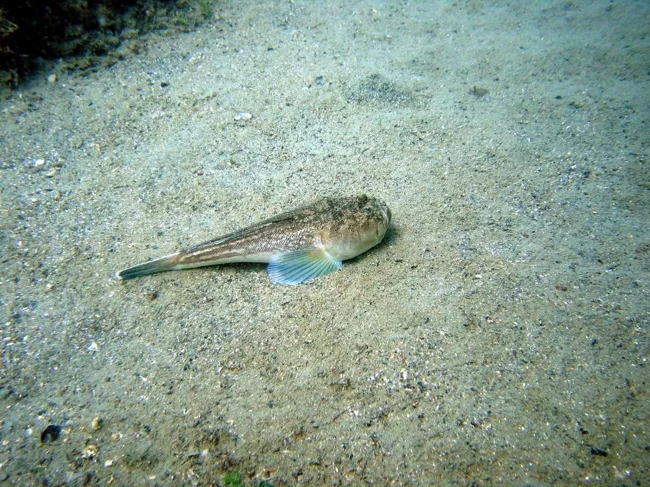
Stargazers range in size from 20 to 60 cm. They can be found in the Atlantic Ocean, the Mediterranean Sea, and off the coast of Australia. Despite their frightening appearance, divers are lucky to see them, as these fish are very secretive and rarely show up in the sand.
Stargazers are living proof of how inventive nature is: their bodies and habits are completely adapted to ambush hunting.
Darwin's batfish - a fish with "human lips" 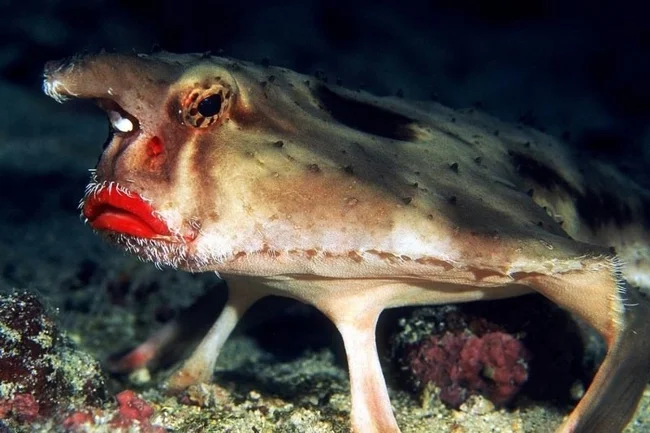
One of the strangest fish of the Galapagos Islands is Darwin's batfish. Its main feature is bright red lips, very similar to human lips. Thanks to this detail, the fish seems to be wearing makeup and looks like it came out of a carnival. Scientists are still arguing about why such lips are needed. Some believe that it is to attract a partner, others - that it is camouflage among corals and algae.
Unlike most fish, the batfish is a poor swimmer. Its fins have turned into peculiar "paws" with which it "walks" along the bottom, waddling from side to side. It looks ridiculous and funny, but this is how it hunts small fish, crustaceans and worms.
The batfish leads a sedentary lifestyle, preferring to lie in wait for its prey rather than actively swim after it. At the same time, it can change the color of its skin depending on the background, which helps it hide from predators 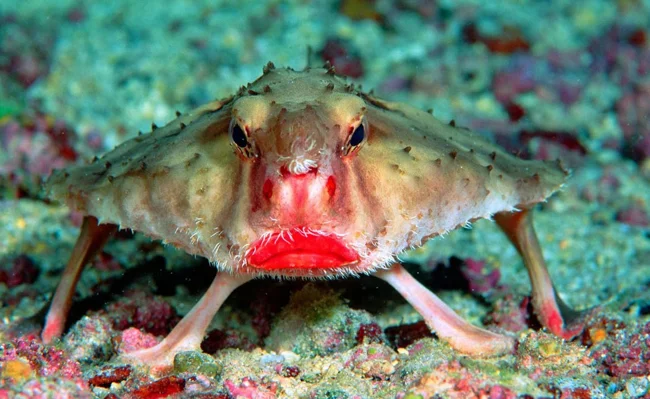
These fish are small - up to 20 cm in length, but they make a strong impression on those who see them for the first time. The scientific community has long debated the taxonomy of batfish, as their appearance is too different from that of ordinary fish.
Darwin's batfish is not only a funny and strange inhabitant of the ocean, but also an important object of study, because its structure helps to understand how fish can adapt to life in the most unusual conditions.
Pufferfish - a cutie full of poison 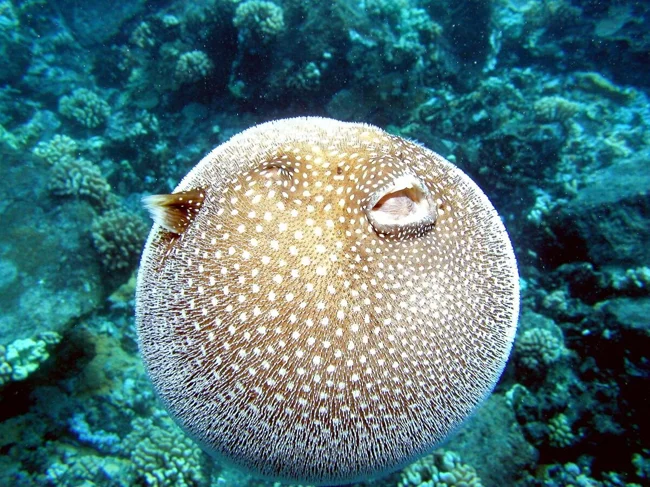
At first glance, the fugu is a very cute little fish. It seems good-natured and even a little funny. But behind this cute appearance lies a deadly danger. The fugu belongs to the pufferfish family and has a unique ability to inflate, increasing in size almost three times. As soon as the fish gets scared, its body inflates, and its skin becomes covered with sharp spines. In this form, the fugu becomes practically invulnerable to predators: no one will be able to swallow such a "thorn".
But this is not its main feature. The fugu contains one of the most powerful natural poisons - tetrodotoxin. It is concentrated in the liver, ovaries, skin and other organs. For humans, a dose of just a few milligrams is lethal. This poison is tens of times stronger than cyanide: it paralyzes muscles, blocks the nervous system and can lead to death by suffocation.
Despite this, in Japan, fugu is considered a real delicacy. Its meat has a delicate taste and is served in expensive restaurants. Only licensed chefs prepare the fish, who spend years learning how to remove the poisonous parts so that the dish is safe. A chef's mistake can cost the customer his life. 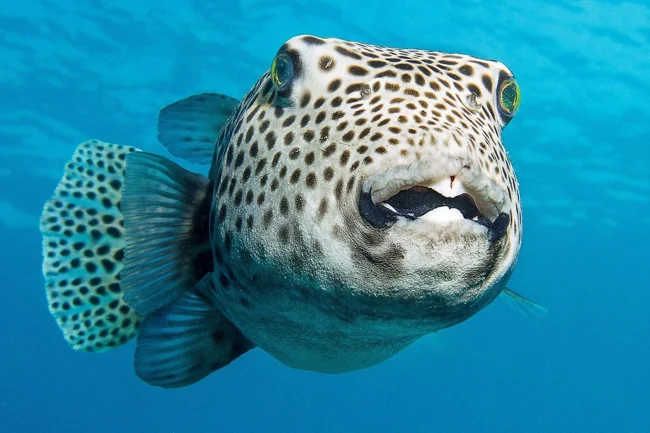
It is interesting that due to the effect of the poison, many gourmets compare eating fugu to "playing with death": slight numbness of the lips and fingertips after eating is considered a sign of a "properly prepared dish".
Fugu is found not only in Japan, but also in the seas of China and Korea. Scientists are currently studying its poison to create painkillers and medicines for medicine.
Thus, the fugu is a combination of beauty, cuteness and mortal danger, which is why it rightfully ranks among the most unusual fish on the planet.
Three-legged fish - a motionless hunter of the depths 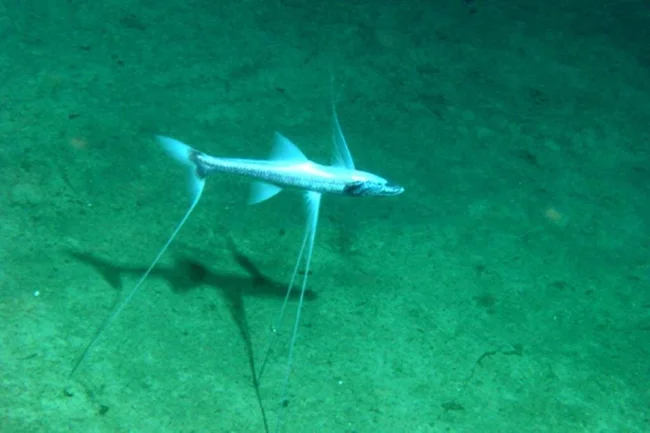
At great depths of the ocean, where eternal darkness reigns and the pressure is monstrously high, lives an amazing creature - a three-legged fish. Its appearance is so unusual that many divers and researchers compare it to an alien creature.
The fish got its name for its habit of standing on three elongated rays of fins, as if on legs. Usually these are rays of the pectoral and pelvic fins, which have turned into a kind of "support". The fish seems to be sitting on the bottom and watching what is happening.
Unlike most fish, the three-legged fish almost does not swim. It leads an extremely sedentary lifestyle, saving energy. In deep conditions, where there is little food, this strategy helps to survive. Its hunt is based on patience: the fish waits motionless until plankton or a small animal swims past, and only then abruptly grabs it.
Three-legged fish have poor vision, which is explained by the darkness at great depths. But they have a well-developed sense of smell and a lateral line that is sensitive to water vibrations. This helps them navigate in space and find prey. 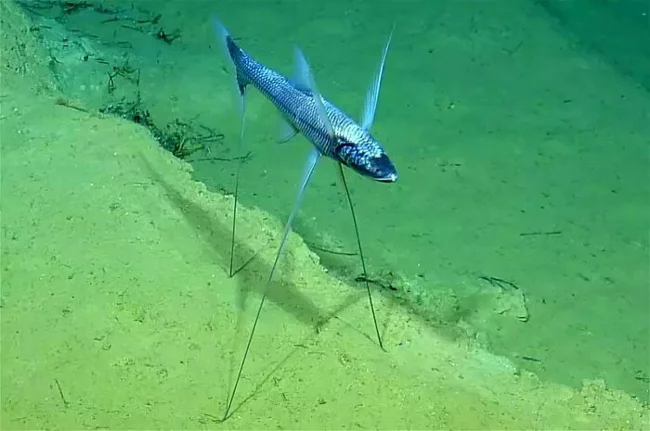
They live at depths of up to 1000 meters, where the temperature is low and light barely penetrates. Due to rare encounters with their own kind, many deep-sea species have evolved along the path of hermaphroditism - one individual can be both male and female at the same time. This increases the chances of reproduction, because every meeting of two fish becomes a chance for the appearance of offspring.
The three-legged fish is not as well known to the general public as the fugu or flying fish, but it is of great interest to scientists. Its lifestyle shows how one can survive in the harshest conditions of the planet, where, it would seem, life is impossible.
Conclusion
The world of fish is amazingly diverse. Some fish can fly, others walk on land, others have poisonous spines or a strange appearance. Each of them is an example of how inventive nature is. And the more we learn about underwater inhabitants, the more we understand that the ocean still holds many secrets waiting to be discovered.






























